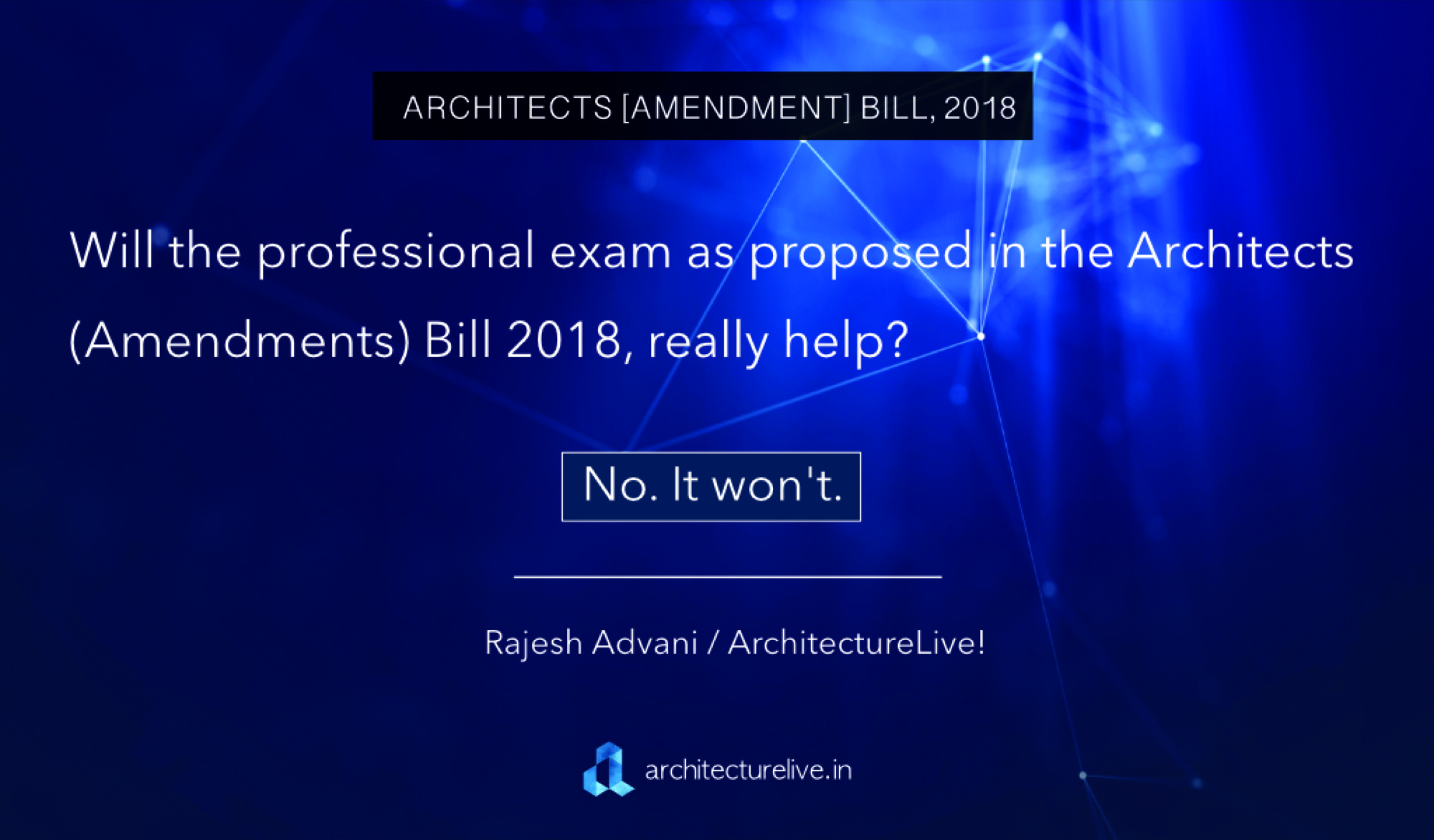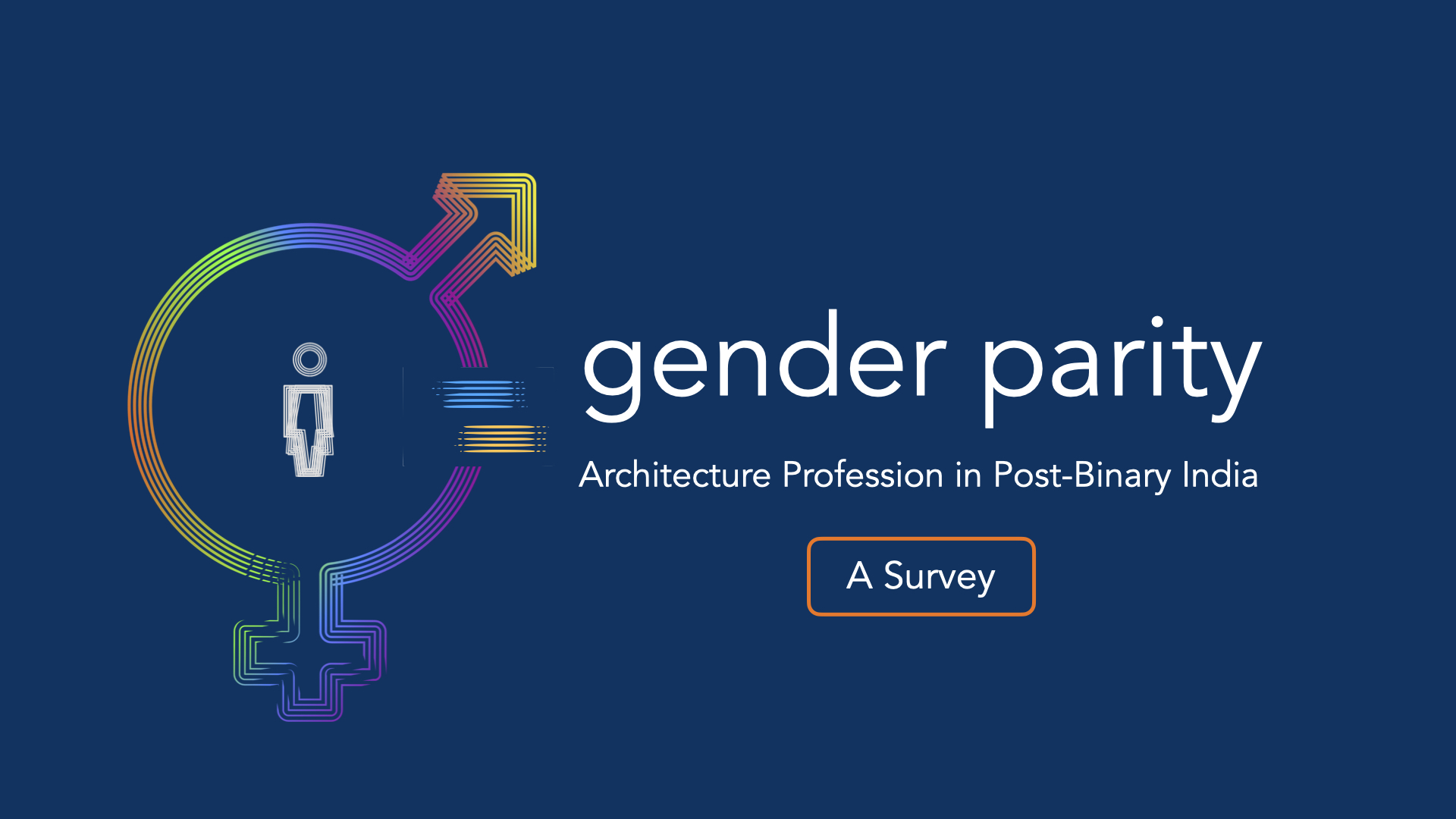No. It won’t.
I will come to the reasons later. Before that, lets us understand what is Architects Act and the proposed amendments, which is referred to as Architects [Amendments] Bill, 2018.
Architects Act 1972
The Architects Act came into force on September 01, 1972, which resulted in the formation of the Council of Architecture. Architects are governed and regulated by the Architect’s Act, 1972. The Act provides for registration of architects, to maintain the standards of architectural education, recognised qualifications and the standards of architectural practice.
In the current format, the Architects Act doesn’t define ‘Architectural Services’ and hence, doesn’t stop anyone from practising Architecture, or providing architectural services in India. It only restricts the use of the title ‘Architect’.
The archaic Architects Act 1972 doesn’t really give many powers to the CoA or help the profession. The recent judgement by The Hon’ble Delhi High Court also has raised many questions about the shortcomings in the act, Read this piece by Abhishek Bij, and this by Sudhir Vohra.
Hence the amendments to the architect act are necessary and urgent.
The Architects (Amendment) Bill, 2018 – The proposed Amendments to Architects Act 1972 by the Council of Architecture.
The Architects (Amendment) Bill 2018 tries to fill many gaps and ensure that the CoA is in a better position to regulate the education and the profession.
One of the major amendments in the Act is with regards to the definitions:
a. Definition of ‘Architect’
Originally, the Act said ““architect” means a person whose name is for the time being entered in the register;”
The Architects Bill, 2018 says,
““architect” means a person whose name is for the time being entered in the register and is duly empowered under the Act to provide Architectural services;”
b. Definition of Architectural Services:
“architectural Services” includes providing any architectural design, plans, preparation of all drawings and documents, tracing or the like, for use in sanction and for construction, extension, addition or alteration of any building and built environment or part thereof including documentation, or, being in responsible control of professional services which require the development of sites, the architectural design, in whole or in part, of buildings or built environment, groups of buildings and also includes scrutinizing the documents, regulating the construction and development of buildings and related matters;
[Download the Proposed Architects Bill 2018]
Now, coming to the subject of this post: The need for the additional qualifying professional exam before one can start the architectural practice, as specified in the clause 25(a), of the Architects Bill 2018. The clause reads:
“A person shall be entitled on payment of such fees as may be prescribed by rules to have his name entered in the register, if he resides and carries on the profession of architect in India and –
(a) has completed 1 year training under a registered architect, firm of architects or limited liability partnership of architects having minimum 5 years of standing, after obtaining the recognized qualification and qualifying the professional examination conducted by the Council under Section 2 (cf) of the Act,”
The reasons I don’t think it will help the profession are below:
A. Purpose – One good thing that CoA seems to accept and agree is that the fresh graduates are not fit for the profession, a majority of them are unemployable and lack even basic communication and drawing skills. So, the purpose of the additional qualifying exam seems to check the ability of the fresh graduate, and his/her preparedness for the profession. Not only professionals, but many academicians have also shared their concerns over the deteriorating state of the architectural education in India and the soaring disconnect between the profession and education.
Who is to be blamed for this? Students? Not really. It is the colleges and the CoA who should take the
By proposing an additional qualifying professional examination after completing the five years course, the CoA is clearly accepting that it has failed to keep a check on the quality of architecture education in India, which it is empowered to. In reality, it is also the failure of the colleges, but, it is the student only who is made to suffer.
During the five year course, every student goes through multiple examinations, a majority of which are conducted and supervised by the Universities. All Universities have to follow the curriculum prescribed by the CoA. The CoA conducts annual inspections of architecture colleges in India – where in addition to the infrastructure and the requisite number of faculty it also has to check the quality of education being imparted. If at all any college fails to maintain a certain level of quality of education, the CoA has powers to recommend the de-recognition of the college.
B. The conduct of the exam.
The Architects Bill 2018 mentions that the CoA will conduct the qualifying exam. I am assuming that it will be done not only by a team of academicians, but also professionals – who will set the papers, and assess them too.
It is safe to assume, most of these experts themselves would be teaching at some or other college. First, by suggesting the need for the additional qualifying exam, the CoA has already doubted its own ability to keep a check on the quality of education, second, by appointing the same experts who have been doubted, isn’t going to achieve much.
If there are professionals who would conduct these exams, and the process is fair, there is a thin chance that even 20% of students will be able to clear the qualifying professional exam.
C. Format?
There is no clarity on the format of the additional qualifying exam. Will it be based on the five-year curriculum? Will it only be theoretical, or will have some practical questions too? Online, or offline? The passing criteria?
What if a student fails to clear the exam? Will he/she have to go through another exam? or repeat some semester or year at the college? Whose failure is it going to be really? Student’s, or the institutes? or the CoA’s?
There is absolutely no clarity on this, and the proposal for the qualifying exam looks like a knee jerk reaction. It only seems to be an attempt to delay the registration of the fresh grad for no valid reason.
Solution?
If the problem is the deteriorating state of the profession, which is because of the poor architecture education, the solution should be to fix the education first. Even with the current Act, the CoA has enough powers to make colleges follow the strict quality checks and bring in the desired change.At the moment, most of the colleges clear the inspection because of the ineffective format of the inspection report. The inspection report gives more emphasis on quantity than quality. Which has resulted into complacent attitude among the colleges, teachers and even students.
Start with fixing the curriculum. In the last two decades, the profession has undergone drastic changes, on the other side, architecture curriculum continues to live in the isolation, having no or very little clue of what’s happening in the profession. Architecture today is no more about just designing buildings and planning. There has to be enough flexibility in the curriculum that allows students to diversify and provide services for different needs of the industry, not just designing buildings.
And unfortunately, except professionals, no one seems to be bothering about it. Because this complacent attitude is directly affecting the profession. It is important that the curriculum is fixed on an urgent basis to reduce the disconnect between education and the profession.
Faculty – The CoA has already taken some steps in this direction by discouraging fresh graduates from entering the academics, and also regularly organising Teacher Training Programs. But, there is a lot more that needs to be done. The CoA must relook into the concept and the need for ‘Full-time Faculty”. Faculty must be trained and encouraged to find ways to reduce the disconnect between the profession and the education, and this is only possible if the curriculum is fixed. Possibly, faculty should also be made to go through regular exams to ensure that they keep up the pace with the changing needs of the profession.
The additional qualifying examination will be a futile exercise, until there are some grassroot reforms at the college level, with respect to upgrading the curriculum and the faculty.









